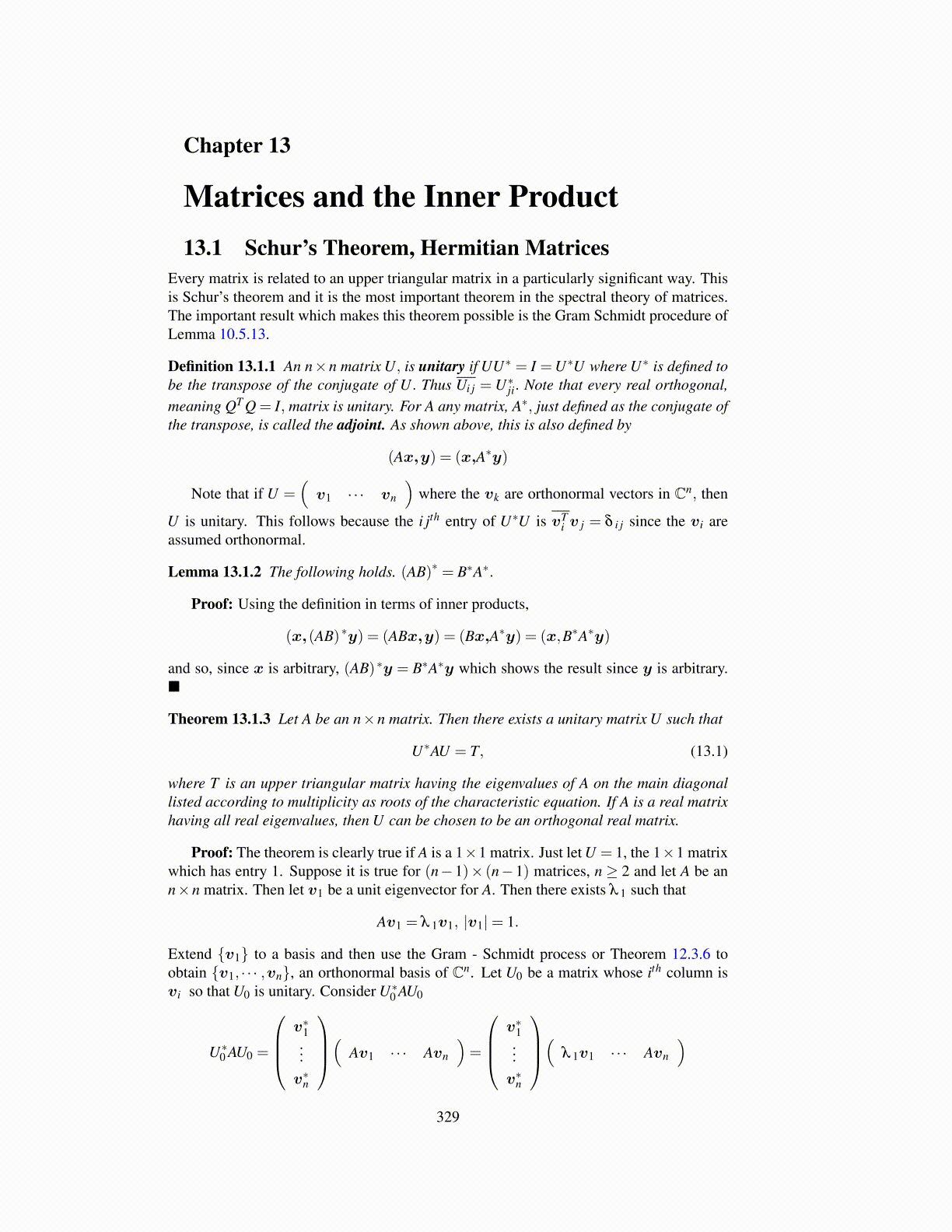
Chapter 13
Matrices and the Inner Product13.1 Schur’s Theorem, Hermitian Matrices
Every matrix is related to an upper triangular matrix in a particularly significant way. Thisis Schur’s theorem and it is the most important theorem in the spectral theory of matrices.The important result which makes this theorem possible is the Gram Schmidt procedure ofLemma 10.5.13.
Definition 13.1.1 An n×n matrix U, is unitary if UU∗ = I =U∗U where U∗ is defined tobe the transpose of the conjugate of U. Thus Ui j = U∗ji. Note that every real orthogonal,meaning QT Q = I, matrix is unitary. For A any matrix, A∗, just defined as the conjugate ofthe transpose, is called the adjoint. As shown above, this is also defined by
(Ax,y) = (x,A∗y)
Note that if U =(
v1 · · · vn
)where the vk are orthonormal vectors in Cn, then
U is unitary. This follows because the i jth entry of U∗U is vTi v j = δ i j since the vi are
assumed orthonormal.
Lemma 13.1.2 The following holds. (AB)∗ = B∗A∗.
Proof: Using the definition in terms of inner products,
(x,(AB)∗y) = (ABx,y) = (Bx,A∗y) = (x,B∗A∗y)
and so, since x is arbitrary, (AB)∗y = B∗A∗y which shows the result since y is arbitrary.■
Theorem 13.1.3 Let A be an n×n matrix. Then there exists a unitary matrix U such that
U∗AU = T, (13.1)
where T is an upper triangular matrix having the eigenvalues of A on the main diagonallisted according to multiplicity as roots of the characteristic equation. If A is a real matrixhaving all real eigenvalues, then U can be chosen to be an orthogonal real matrix.
Proof: The theorem is clearly true if A is a 1×1 matrix. Just let U = 1, the 1×1 matrixwhich has entry 1. Suppose it is true for (n−1)× (n−1) matrices, n ≥ 2 and let A be ann×n matrix. Then let v1 be a unit eigenvector for A. Then there exists λ 1 such that
Av1 = λ 1v1, |v1|= 1.
Extend {v1} to a basis and then use the Gram - Schmidt process or Theorem 12.3.6 toobtain {v1, · · · ,vn}, an orthonormal basis of Cn. Let U0 be a matrix whose ith column isvi so that U0 is unitary. Consider U∗0 AU0
U∗0 AU0 =
v∗1...v∗n
( Av1 · · · Avn
)=
v∗1...v∗n
( λ 1v1 · · · Avn
)
329